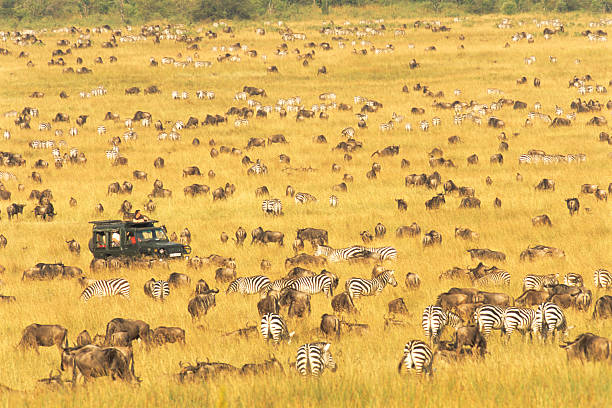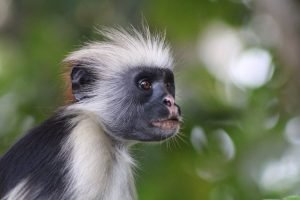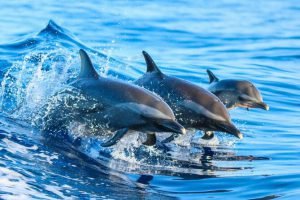Zanzibar-Holiday Haven
Related Tours

12 Days Uganda, Kenya and Tanzania safari
Take on the 12 days East Africa safari to Uganda where you will get to see the endangered mountain gorillas in Bwindi Impenetrable National park, Chimpanzees trekking in Kibale National Park, head to Kenya into …
Zanzibar is an archipelago located off the coast of Tanzania in East Africa, known for its stunning beaches, crystal-clear waters, and rich cultural heritage. As a tourist destination, Zanzibar offers a unique blend of African, Arabic, and Indian cultures, which is reflected in its architecture, cuisine, and music.
The island’s main attraction is undoubtedly its beautiful beaches, which offer excellent opportunities for swimming, sunbathing, and water sports such as snorkeling and scuba diving. Popular beaches include Nungwi, Kendwa, and Paje, each with its own unique atmosphere and charm.
Zanzibar’s capital, Stone Town, is a UNESCO World Heritage Site and a must-visit destination for tourists. The city’s narrow streets are lined with historic buildings, including the House of Wonders, the Old Fort, and the Palace Museum. Stone Town is also known for its bustling markets, where visitors can find a wide range of goods, including spices, fabrics, and handicrafts.
Zanzibar is also home to several wildlife reserves, including Jozani Forest, which is home to the rare red colobus monkey, and the Menai Bay Conservation Area, which is known for its dolphin and whale watching opportunities.

Zanzibar red colobus monkey
Foods & cuisines
Zanzibar’s cuisine is a fusion of African, Indian, and Arab influences, with dishes such as pilau rice, biryani, and seafood curry being popular choices. Visitors can also enjoy fresh seafood and tropical fruits, such as mangoes and pineapples, at the island’s many restaurants and food stalls.
Land Mass statistics
Zanzibar, also called Swahili Unguja island in the Indian Ocean, is lying 22 miles (35 km) off the coast of east-central Africa. In 1964 Zanzibar, together with Pemba Island and some other smaller islands, joined with Tanganyika on the mainland to form the United Republic of Tanzania. Area 600 square miles (1,554 square km). Pop. (2007 est.) 713,000 people
 .
.
Zanzibar-aerial-view
Geography & Climate
Both Zanzibar and Pemba are believed to have once formed part of the African continent, the separation of Pemba having occurred during the Miocene Epoch (about 23 to 5.3 million years ago) while Zanzibar dates from the Pliocene Epoch (about 5.3 to 2.6 million years ago) or even later.
Flat areas of coral limestone occur to the east, south, and north of Zanzibar and on the western islands. In places the coral is overlain by shallow red earth or alluvium.
The general impression of Zanzibar when approached from the mainland is of a long, low island with small ridges along its central north–south axis. Coconut palms and other vegetation cover the land surface.
It is 53 miles (85 km) at its greatest length and 24 miles (39 km) broad. The highest point of the central ridge system is Masingini, 390 feet (119 m) above sea level.
Higher ground is gently undulating and gives rise to a few small rivers, which flow west to the sea or disappear in the coral country.
The climate is typically insular, tropical, and humid, with an average annual rainfall of 60 to 80 inches (1,500 to 2,000 mm).
Rainfall is reliable and well-distributed in comparison with most of eastern Africa. Northeast trade winds blow from December to March and southeast trade winds from May to October.The “long rains” occur between March and May and the “short rains” between October and December.
Small patches of indigenous forest and isolated large trees support the view that much of the island was originally covered by dense evergreen forest. The open coral-outcrop country supports a dense thicket vegetation.
The flat clay plains are grass-covered. The major wild animals include leopard (a variety peculiar to Zanzibar), civet cat, mongoose, two species of monkey, lemur, the African pig, forest duiker, pigmy antelope, about 20 species of bats, and 30 forms of snakes.
Tip: Mosquitoes breed freely during the rainy seasons. Insect pests such as the cored bug (Pseudoseptum wayi), which attacks coconuts, and animal pests and parasites, such as tsetse fly and ticks (which transmit east coast fever to cattle), have been the subject of research and control. “So its important to note when traveling to the island, use a mosquito reparent or a mosquito net especially in rainy seasons”.
Trade:
Before the development of eastern African mainland ports, Zanzibar was the trade focus of the region and enjoyed an important entrepôt trade. The island’s economy now depends on agriculture and fishing.
Considerable areas of fertile soil and a favorable climate enable the production of a variety of tropical crops, most importantly cloves and coconuts. Local food crops, such as rice, cassava, yams, and tropical fruit, are also important.
Fish is an important part of the diet, and local fisheries employ perhaps about one-tenth of the population.
Ethnic settlements in Zanzibar
The southern and eastern portions of Zanzibar Island have been mainly populated by a Bantu-speaking people known as the Hadimu.
The northern portion of Zanzibar Island and the adjacent Tumbatu Island have been occupied by another Bantu-speaking people known as the Tumbatu. These two groups represent the earliest arrivals in Zanzibar.
The language most widely spoken is a highly Arabicized form of Swahili (Kiswahili).
Among the Arabs, the language of the home is usually Swahili, and use of pure Arabic is confined to scholars and recent arrivals from Arabia.Gujarati, Hindi, Urdu, and Konkani are spoken by the Asian communities, and English and Swahili are widely used and understood.
History
Zanzibar’s history was greatly shaped by its geography, the prevailing winds of the region placing it directly on the Indian Ocean trade routes and making it accessible to both traders and colonists from Arabia, south Asia, and the African mainland.
The first immigrants were the Africans; the next were the Persians, who began to land in Zanzibar in the 10th century and who, over a brief period, became absorbed into the local population and disappeared as a separate group.
Their influence was left in the gradual consolidation of disparate villages and rural populations into what came to be recognized as two peoples, the Hadimu and the Tumbatu.
This African-Persian population converted to Islam and adopted many Persian traditions. (Even today, most of Zanzibar’s African population calls itself “Shirazi,” in echo of the ancient Persian principality of Shiraz, from which the earliest Persians came.)
Arabs had the deepest influence on Zanzibar, because the island’s position made it a perfect entrepôt for Arabs mounting slave expeditions into Africa and conducting oceangoing commerce.
Arabs from Oman became especially important, for they began establishing colonies of merchants and landowners in Zanzibar. Eventually they became the aristocracy of the island.
The Portuguese then came in the 16th century and conquered all the seaports on the eastern African coast, including Mombasa, the richest and most powerful, as well as such islands as Zanzibar and parts of the Arabian coast, including the Omani capital of Muscat. Later the British took over and even declared it a protectorate(for more of this history visit the island to learn more of its rich past).

The former sultan’s palace, facing the harbour at Zanzibar
In 1963 the sultanate regained its independence, becoming a member of the British Commonwealth. In January 1964 a revolt by leftists overthrew the sultanate and established a republic.
The revolution marked the overthrow of the island’s long-established Arab ruling class by the Africans, who were the majority of the population.
In April the presidents of Zanzibar and Tanganyika signed an act of union of their two countries, creating what later in the year was named Tanzania.
Overall, Zanzibar is a wonderful destination for tourists looking for a unique blend of natural beauty, cultural heritage, and adventure.

Caption:Dolphine-tour along the Mnemba island reef, Zanzibar
For more information visit us! or WhatsApp at +256 750 383 994
Share this tourZootopia Game Drive Safaris Ltd

Located at Bunamwaya, Ngobe Wakiso, Padre-Pio Road, SJP Apartments Ground floor -Room 1.
Kampala office: William street, Gazaland building Level 7, Room 768.
Email:
info@zgd-safaris.com / 256gorillasafaris@gmail.com
Tell:+256750383994 / WhatsApp:+256779412601
Subscribe Now
FOLLOW US
GetYourGuide


